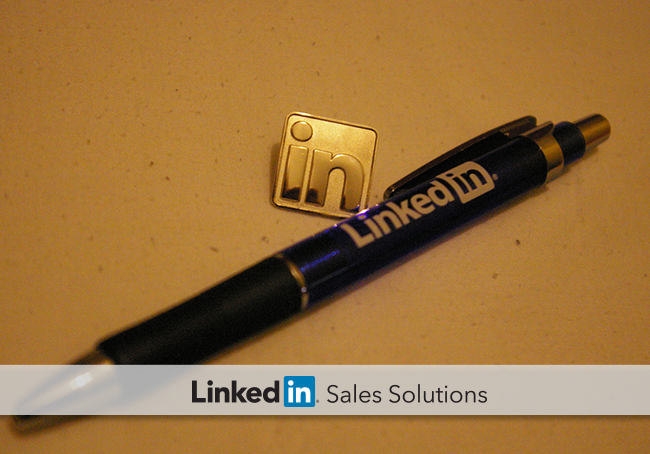How B2B Buyers Perceive Sales Professionals
What do B2B buyers think of sales professionals? Does the overall impression of sales people vary by region, industry or function? What is the current B2B playing field for today’s salesperson?
As we developed the new Sales Navigator, we wanted to understand the preconceptions and preferences that B2B buyers have of sales professionals, and how they reach out in general. We conducted a survey of 1,500 B2B purchasers/influencers on LinkedIn to see how they view the sales profession.
The study’s overall summary clarifies the need for focus, information and trust in a sales strategy. Here are the takeaways for professionals looking to enhance their tactics.
What do B2B buyers think of sales professionals?
Before the initial connection, most B2B buyers (47%) view sales professionals neutrally – due to the wide variety of experiences. This neutrality serves as a blank slate – there is room for growth, but there is also room for error. With such a wide margin of experience, only the most focused and prepared sales professionals can emerge from the pack.
• Positive (43% of respondents): B2B buyers with positive feelings often cite good first impressions, frequent contacts, and extensive research as reasons for their reviews.
• Neutral (47% of respondents): These buyers have had good and bad experiences, and their view is dependent on the individual professional.
• Negative (10% of respondents): These buyers view the sales profession with skeptical eyes, often arguing that sales professionals are too pushy, disruptive, and annoying.
Reaching through to the neutral and negative audiences is an ongoing challenge for sales professionals, but there are several strategies that can help bridge the gap. Let’s first look at why B2B buyers don’t engage with sales.
Why do some B2B buyers reject sales professionals?
In our survey, B2B buyers cast a widely negative view on cold sales, with more than half (59%) viewing sales professionals less favorably after a cold connection. The impression of the sales professional’s company also suffers as well. Cold selling lacks the fundamental tactics that establish good business relationships – they aren’t personalized, relevant or welcoming.
The #1 reason why B2B buyers don’t engage with sales professionals is because the product or service isn’t relevant to their company. That’s a lack of focus – and a huge detriment to the professional’s selling strategy.
Here are some other statistics that explain why B2B buyers don’t engage with sales professionals:
• 89% of buyers turn away if the professional doesn’t have insights or knowledge about their business.
• 71% of buyers deny the sale because it isn’t the right time to consider the product/service.
• 59% of buyers reject a cold connection outright.
• 50% of buyers don’t engage because they aren’t the right person to contact.
• 50% of buyers avoid sales professionals with incomplete LinkedIn profiles.
Without the ideal combination of focus, information and trust from the sales professional, the B2B buyer is often left disappointed. Thankfully, there are solutions available to help professionals achieve those goals.
What makes B2B buyers more likely to engage?
Regardless of industry, buyers have a more favorable view of informed sellers – and are more likely to engage with them. The expectations for prospect research and insight generation are extremely high, and collecting this knowledge will help separate sales professionals from the pack.
Here are some additional statistics as to why B2B buyers engage with sales professionals:
- 92% of buyers engage if the professional is a known industry thought leader.
- 88% of buyers accept connections through someone in their existing professional network.
- 86% of buyers will listen if sales professionals provide insights about their business.
- 46% of buyers will engage in the professionals has a complete LinkedIn profile.
The buying world is growing increasingly complex, as more people and departments are involved in purchasing decisions. This places greater work on the sales professional to develop multi-threaded connections at the target company – should a contact change jobs or leave altogether.
What does this mean for sales professionals?
Reaching out to a prospect without any warm connections or relevant information is foolish, and the prospect will likely reject it outright. The new Sales Navigator can help professionals develop that ideal mix of focus, information and trust that builds successful sales relationships:
- Focused: Sales professionals can focus on the right people and companies before reaching out. Premium Search filters and Lead Recommendations can target relevant prospects by industry, job function, geography and more.
- Informed: Professionals can stay informed about account and industry updates, and develop relevant insights that make them stand out. Alerts generated from Saved Leads and Accounts within the new Sales Navigator can keep track of all prospect activity, including job changes.
- Trusted: Professionals can become more trusted by gaining introductions with key prospects via people in their own professional network. The TeamLink function provides shared connection opportunities within a sales team, and Premium Profiles help establish thought leadership credibility on the LinkedIn platform.
The B2B buyer audience is largely a blank slate right now, but that can change with the right actions from sales professionals. Get the full scoop from our study, and visit us on Twitter @LinkedInSelling for more insights!
Topics: LinkedIn sales guides
Related articles




